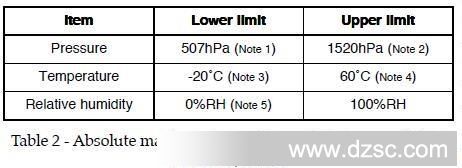图文详情
产品属性
相关推荐
日本*氧气传感器,测量范围0-100%,六角型进气口
The GS Oxygen Sensor KE-Series is a unique galvanic cell t*e oxygen sensor which provides a linear output voltage signal relative to percent oxygen present in a particular atmosphere. The sensor features long life expectancy, excellent chemical durability, and it is not influenced by CO2, making it ideal for oxygen monitoring.
1. Introduction
The GS Oxygen Sensor KE series (KE-25 and KE-50) is a unique galvanic cell t*e oxygen sensor which was developed in Japan in 1985. Its most notable features are a long life expectancy, excellent chemical durability, and it is not influenced by CO2. The KE series oxygen sensor is ideal to meet the ever-increasing demand for oxygen monitoring in various fields such as combustion gas monitoring, the biochemical field, medical applications, domestic combustion appliances, etc.
2. Basic Information and Specifications
2-1 Features
* Long life (KE-25 - 5 years / KE-50 - 10 years)
* Virtually no influence from CO2, CO, H2S, *x, H2
* Low cost
* Operates in normal ambient temperatures
* Stable output signal
* No external power supply required for sensor operation
* No warm-up time is required
2-2 Applications
* Medical - Anesthetic instruments, respirators, oxygen-enrichers
* Biotechnology - Oxygen incubators
* Food industry - Refrigeration, greenhouses
* Safety - Air conditioners, oxygen detectors, fire detectors
2-3 Structure and operating principle
The KE series sensor is a lead-oxygen battery which incorporates a lead anode, an oxygen cathode made of gold, and a weak acid electrolyte. Oxygen molecules enter the electrochemical cell through a non-porous fluorine resin membrane and are reduced at the gold electrode with the acid electrolyte. The current which flows between the electrodes is proportional to the oxygen concentration in the gas mixture being measured. The terminal voltages across the thermistor (for temperature compensation) and resistor are read as a signal, with the change in output voltages representing the change in oxygen concentration.
The following chemical reactions which take place in KE sensors:
Cathodic reaction: O2 4H 4e- → 2H2O
Anodic reaction: 2Pb 2H2O → 2PbO 4H 4e-
Total reaction: O2 2Pb → 2PbO
A *all volume air bubble is contained inside the sensor body in order to compensate for internal influence from pressure changes. The sensor's electrolyte is primarily composed of acetic acid with a pH of approximately 6. The sensor's body is made of ABS resin.
Both the KE-25 and the KE-50 sensors are based on identical design and performance principles. The basic difference between these two models is in the thickness of the fluorine resin membrane. This affects the diffusion speed of oxygen molecules and, as a result, the response speed and life of the sensor. Each model shows basically the same performance in the various conditions described in the technical data, e.g. influence by other gases, pressure dependency, etc.
2-4 Specifications
Table 1 (see following page) shows the specifications of the KE series oxygen sensors.
Notes:
1) When calibrated at both 0% and 100% of O2, accuracy in the range from 0-100% O2 shall be within &plu*n;1% of full scale for KE-25 and &plu*n;2% of full scale for KE-50.
2) Va = output voltage at 21% O2
V0 = output voltage at 0% O2
V100 = output voltage at 100% O2
3) Va = output voltage at 25?C
VH = output voltage at 40?C
VL = output voltage at 5?C
4) Sensors should be used under conditions where the air exchange is greater than 200~300ml per minute in order to obtain the response speed as specified in Table 1. 2-5 Absolute maximum operating and storage conditions
2-5 Absolute maximum operating and storage conditions
The accumulated total duration of exposure to the absolute maximum conditions listed in Table 2 should be limited to no more than 24 hours.
Cautions:
1) Beneath the lower pressure limit, sensor life may
50become shorter due to excessive evaporation of the liquid electrolyte.
2) At pressure in excess of the upper limit, sensor output may become unstable due to excessive air entering through the o-ring.
3) Below -20?C, the electrolyte will freeze and the sensor will not function. KE sensors are not damaged by freezing of the electrolyte and will resume functioning after the electrolyte thaws to a liquid state.
4) At temperatures in excess of the upper limit, the ABS resin casing may deteriorate.
5) If used for a long period in an extremely dry environment, sensor life may be shortened due to excessive evaporation of the liquid electrolyte.
否
FIGARO
KE-25
气敏
混合物
半导体
单晶
集成
模拟型
1
1(%F.S.)
1(%F.S.)
1(%F.S.)
1
1
1